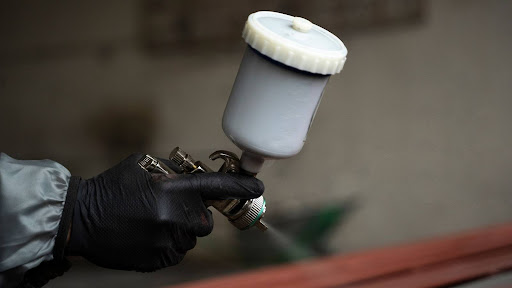Get Back to Spraying: Must-Have Parts for Your Paint Sprayer
- 32 Views
- arslanchaudhary7439@gmail.com
- June 30, 2025
- Business
A paint sprayer makes painting projects faster, cleaner, and more professional-looking. But over time, even the best sprayers need some attention. Whether you’re a DIYer or a pro, worn-out or missing parts can bring your work to a grinding halt. To keep your paint sprayer running smoothly, it’s essential to know the key components and when to replace them.
Understanding and maintaining the wagner sprayer parts ensures consistent performance, better spray patterns, and fewer delays. In this guide, we’ll walk you through the must-have paint sprayer parts, how to identify issues, and tips to extend your equipment’s lifespan.
The Heart of It All: Sprayer Gun Components:
Nozzles and Tips:
The spray tip is one of the most important parts of your paint sprayer. It determines how wide the spray pattern is and how much paint is delivered. Over time, nozzles wear out, especially if you’re using thicker paints or working on large surfaces. A worn tip can cause uneven application or overspray.
Tip: Always keep multiple tip sizes on hand. Use smaller tips for detailed work and wider tips for walls or fences.
Filters:
Sprayer guns usually include filters that trap debris and prevent clogging. If your sprayer starts spitting or loses pressure, a clogged filter may be to blame. Replace or clean filters regularly to maintain a smooth, even spray.
Power and Pressure: Pump and Motor Parts:
Pistons and Seals:
Airless paint sprayer relies on a piston pump to deliver high-pressure paint flow. The piston works with internal seals that wear down from repeated use. Leaks or loss of pressure are signs that these parts need replacement.
Pro Tip: Use pump protector fluid after every use to extend the life of internal components.
Pressure Control Knobs:
Your sprayer’s pressure control knob helps regulate how much paint is delivered. A faulty control knob can lead to inconsistent spray or sudden pressure spikes. Replacing a worn or broken knob can bring your sprayer back to full control.
Flow and Function: Hoses and Connectors:
Paint Hoses:
A paint sprayer’s hose endures a lot of bending, coiling, and pressure. Cracks, bulges, or leaks can disrupt your workflow and waste material. It’s a good idea to inspect hoses for damage before every project and replace them when needed. Look for hoses with reinforced linings if you’re working with heavy-duty materials or high pressures.
Quick-Connect Fittings:
Quick-connect couplers make it easier to attach and detach hoses or spray guns. If these fittings wear out or get damaged, you may experience leaks or loss of connection mid-spray. Always keep spares on hand to avoid downtime.
Keep it Flowing: Suction Tubes and Inlet Valves:
Suction Sets:
Paint is drawn from the bucket through a suction tube, which must stay clean and intact. A blocked or cracked suction set may reduce flow or introduce air bubbles. Make sure to rinse these parts thoroughly after each use.
Inlet and Outlet Valves:
These valves regulate the paint entering and leaving the paint sprayer. Wear and tear can lead to pressure issues or clogged lines. Replacing worn valves restores optimal performance and keeps paint moving smoothly through the system.
Safety and Stability: Accessories That Make a Difference:
Gaskets and O-Rings:
Gaskets and O-rings provide tight seals at joints and connections. A small tear or crack can cause leaks or reduce pressure. Always check for signs of wear during routine maintenance and keep a seal kit nearby for quick repairs.
Spray Guards:
A spray guard attaches to the front of your paint sprayer to reduce overspray and ensure safe operation. This small but vital accessory helps maintain a clean spray pattern and protects nearby surfaces.
When to Replace vs. When to Repair?
Knowing when to replace a part versus repairing it can save time and money. Here are some quick guidelines:
- Replace if the part is cracked, deformed, or rusted.
- Repair if it’s clogged, slightly worn, or leaking (and repair kits are available).
- Inspect regularly—catching issues early helps prevent complete failure during a project.
Tips to Keep Your Paint Sprayer in Top Shape:
Clean After Every Use:
Clogs and residue build up quickly. Flush your sprayer with water or solvent immediately after each project.
Use Protective Fluids:
Pump protectors prevent corrosion and extend part life. Store your paint sprayer with protection fluid inside.
Store Properly:
Keep your sprayer in a clean, dry space. Avoid wrapping hoses tightly or placing heavy items on top of parts.
Follow Manufacturer Guidelines:
Always use genuine parts compatible with your brand and model. Check your manual for maintenance schedules and part numbers.
Popular Spare Parts to Keep in Your Kit:
Here’s a list of the most commonly replaced sprayer parts:
- Spray tips (multiple sizes)
- Filters (gun, manifold, inline)
- Hoses (extra-long and standard)
- Pistons and packing kits
- O-rings and gaskets
- Suction tubes
- Inlet/outlet valves
- Pressure control knob
- Quick-connect fittings
Having these items on hand means you’ll never have to pause your project due to an unexpected issue.
Ready, Set, Spray!
Your paint sprayer is only as good as its parts. A single worn component can throw off your entire job. By understanding which parts are most likely to wear out—and keeping spares nearby—you can stay productive, deliver professional finishes, and avoid costly delays.
Don’t wait until your sprayer fails mid-project. Stock up on essential paint tool parts, maintain your equipment, and get back to spraying with confidence.Keep visiting Study Cafe for more informative blogs.
